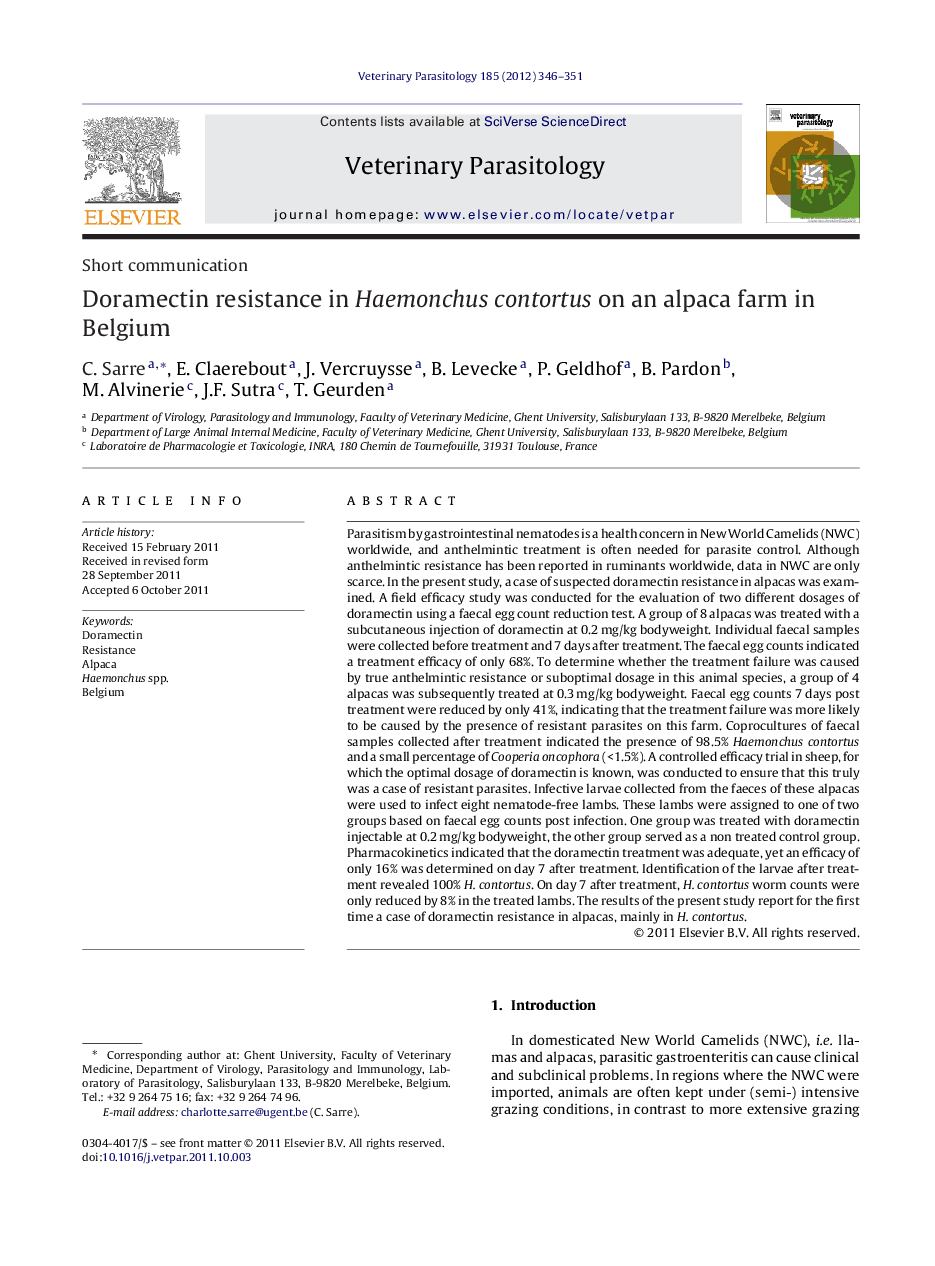| کد مقاله | کد نشریه | سال انتشار | مقاله انگلیسی | نسخه تمام متن |
|---|---|---|---|---|
| 5805188 | 1555716 | 2012 | 6 صفحه PDF | دانلود رایگان |

Parasitism by gastrointestinal nematodes is a health concern in New World Camelids (NWC) worldwide, and anthelmintic treatment is often needed for parasite control. Although anthelmintic resistance has been reported in ruminants worldwide, data in NWC are only scarce. In the present study, a case of suspected doramectin resistance in alpacas was examined. A field efficacy study was conducted for the evaluation of two different dosages of doramectin using a faecal egg count reduction test. A group of 8 alpacas was treated with a subcutaneous injection of doramectin at 0.2Â mg/kg bodyweight. Individual faecal samples were collected before treatment and 7 days after treatment. The faecal egg counts indicated a treatment efficacy of only 68%. To determine whether the treatment failure was caused by true anthelmintic resistance or suboptimal dosage in this animal species, a group of 4 alpacas was subsequently treated at 0.3Â mg/kg bodyweight. Faecal egg counts 7 days post treatment were reduced by only 41%, indicating that the treatment failure was more likely to be caused by the presence of resistant parasites on this farm. Coprocultures of faecal samples collected after treatment indicated the presence of 98.5% Haemonchus contortus and a small percentage of Cooperia oncophora (<1.5%). A controlled efficacy trial in sheep, for which the optimal dosage of doramectin is known, was conducted to ensure that this truly was a case of resistant parasites. Infective larvae collected from the faeces of these alpacas were used to infect eight nematode-free lambs. These lambs were assigned to one of two groups based on faecal egg counts post infection. One group was treated with doramectin injectable at 0.2Â mg/kg bodyweight, the other group served as a non treated control group. Pharmacokinetics indicated that the doramectin treatment was adequate, yet an efficacy of only 16% was determined on day 7 after treatment. Identification of the larvae after treatment revealed 100% H. contortus. On day 7 after treatment, H. contortus worm counts were only reduced by 8% in the treated lambs. The results of the present study report for the first time a case of doramectin resistance in alpacas, mainly in H. contortus.
Journal: Veterinary Parasitology - Volume 185, Issues 2â4, 30 April 2012, Pages 346-351